
Comparison of prints made with traditional and with glass negative carriers
I had some concerns about edge sharpness when evaluating prints made with my new Nikon 45mm 2.8 Tessar-formula lens. The negatives are very sharp when examined with a loupe, but parts of the print didn't reproduce the sharpness seen in the negative. I suspected that the lack of negative flatness was one cause of the problem. Newly developed negatives in particular tend to curve toward the emulsion side.
I took the plunge and bought a lightly-used negative carrier for my Omega D2 enlarger that had glass on both top and bottom surfaces to hold the negative flat. I found the negative carrier at Midwest Photo in Columbus Ohio for $65. It is difficult to use (loading difficulties, trapped dust, Newton's rings, etc.), so I wanted to see if there was indeed a visible difference between the glass negative carrier and a plain (no glass) carrier.

The glass negative carrier is shown on the left, and the standard (glassless) negative carrier for the Omega D2 is shown on the right. Note that the standard negative carrier can be separated into two halves, while the spring metal hinge on the rear of the glass negative carrier prevents separating the top and bottom.
The illustration below shows the entire scene which represents most, but not all, of the 35mm T-Max 100 negative. The 8x10 enlargements onto Ilford Multigrade paper were made between f/5.6 and f/8 with a Rodenstock 80mm f/4 Rodagon enlarging lens, then scanned using a flatbed scanner. The two areas that were examined for sharpness are shown outlined in red. Scroll down to see comparisons of these areas.
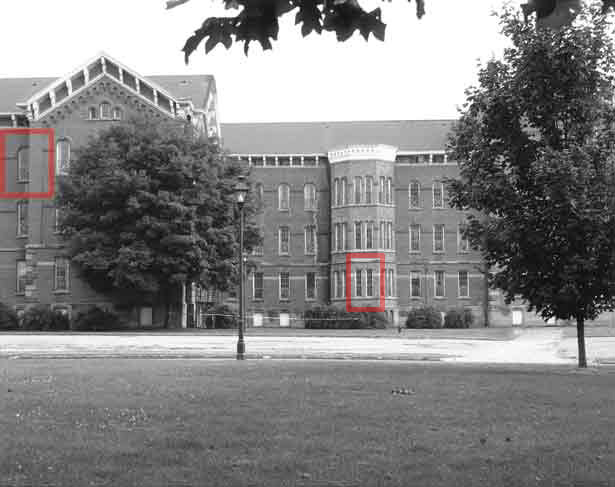
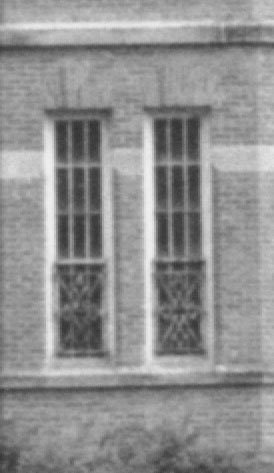 |
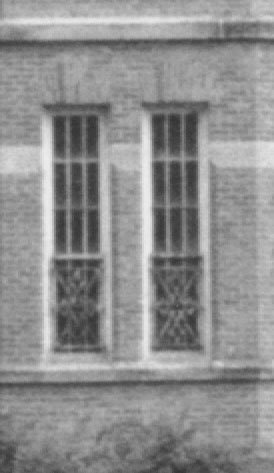 |
| Detail near center of negative, glass negative carrier | Detail near center of negative, plain negative carrier |
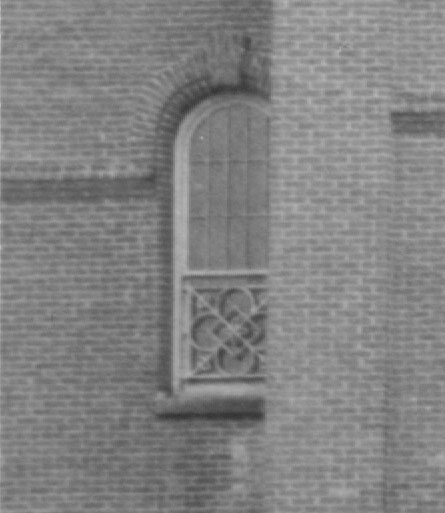 |
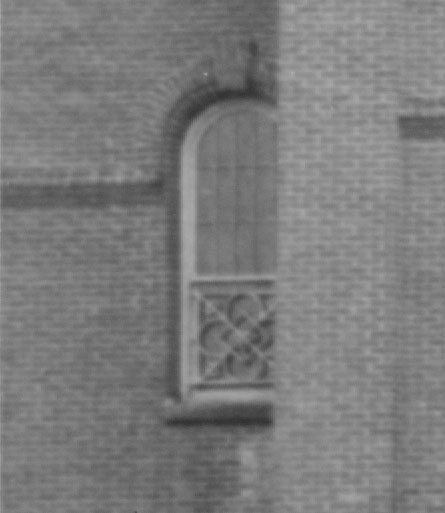 |
| Detail near edge of negative, glass negative carrier | Detail near edge of negative, plain negative carrier |
Conclusion: Glass negative carriers used with the 80 mm Rodenstock Rodagon enlarging lens produce noticeably sharper pictures near the edges of the frame. Center sharpness isn't affected nearly as much as the edges - if at all.
The negative carrier is difficult to use - it's hard to load because of its cumbersome physical size and the glass surfaces attract dust. Because the glass is recessed in the aluminum, reaching the corners to clean it is nearly impossible. I had to disassemble the negative carrier to clean it. Newton's Rings are another problem that must be dealt with when printing, and sometimes they seem to be impossible to get rid of.
There are times when maximum sharpness is required, and the glass negative carrier can be used for this kind of critical work. Many older negatives of mine are fairly flat because of long-term storage in binders. They seem to print OK without the glass negative carrier, but recently processed negatives are almost always "curly" and would benefit from the glass negative carrier.
Bill Schneider
Summer 2003